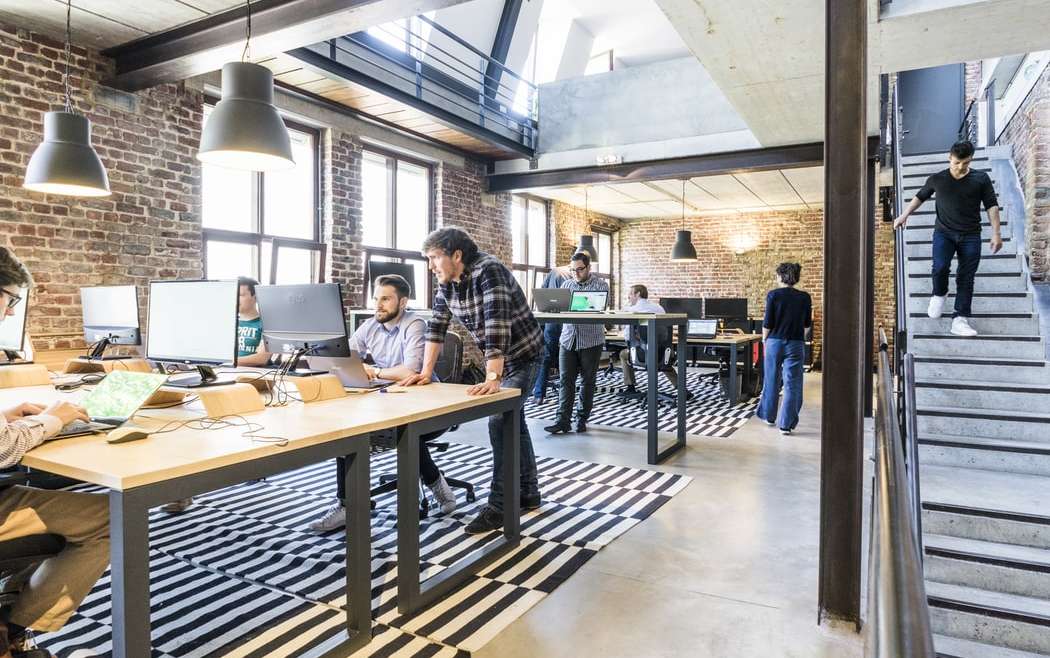By investing in enterprise management systems and intelligent apps, buildings can become more than just a workplace
As technology continues to improve, we’re seemingly able to control almost every aspect of our lives through smart devices we carry with us everywhere, such as our smartphones. Software applications that allow us to order transportation easily, access our home security cameras while on vacation and even pay bills during our commute. The same expectations of simple management and improved personalization are moving to the workplace environment.
Employees are looking for comfortable, convenient, and productive spaces in the workplace environment.
Building managers and owners want to meet the needs of their employees by delivering a comfortable and safe environment while ensuring efficient operations. No matter the building type – whether it be an office, hospital or municipal plant– these two objectives can be met.
Building efficiency features can lead to employee wellness and satisfaction through proper air circulation and temperature control, for example. With smart technology apps, a workplace environment co-managed by facility professionals and employees is possible.
Smarter technology for enhanced efficiencies and employee morale.
Before handing over building controls to employees, it’s important to ensure the proper mechanisms are in place to help monitor usage and building efficiencies. Connecting building systems – like HVAC, lighting and elevator controls – onto one interactive and easy-to-access enterprise management system. The system can help create a flexible, future-ready foundation for smarter technology integration and streamlined efficiency.
With an enterprise management system in place, smart building management apps can be deployed to allow employees control over their environment.
These apps can allow occupants to adjust building environment variables like heating, cooling and lighting to create their own perfect work setting that meets their unique needs. These apps can also be configured to allow conference room booking, locate colleagues within their building, and navigate to meeting rooms and other spaces. With these apps, employees are empowered to take control of their day-to-day workplace experience.
In addition to an improved management experience, enterprise management systems produce large volumes of valuable data, especially when transitioning to an employee-controlled environment.
Combining this wealth of data with artificial intelligence (AI) and machine learning offers an opportunity to analyze internal operations and uncover patterns in energy usage. Starting an employee-controlled environment project by first uniting building operations within an enterprise management system helps to ensure the facility is functioning at its most efficient capacity.
With granular insight into how equipment and technology are performing and being used, building managers can monitor how employee adjustments are impacting building performance. For example, if an employee consistently turns on lights but forgets to turn them off, managers can use this information to help correct the problem.
Why invest in employee-controlled environments?
Employers have a responsibility to their staff to deliver the best environment experience possible. For companies interested in boosting employee retention, offering more control over their environment can show a commitment to their wellbeing.
Caring about the needs and day-to-day wellness of employees by providing an enjoyable space can directly impact workplace productivity. It’s difficult to remain focused and motivated when you are working in an uncomfortable environment, whether that’s an uncomfortably cold office in the winter or under the blinding effects of fluorescent lights.
By giving occupants the power to control these factors by turning up the thermostat or dimming the lights using a smartphone app, they can create a space that is optimized for their personal productivity needs.
The marriage of building efficiency and employee satisfaction
Achieving building sustainability goals and improving employee satisfaction and productivity are common business objectives, but as building management technology continues to evolve, they’re no longer siloed.
With smart technology solutions, buildings can operate at peak efficiency while providing employees with the ability to optimize their own environments.
By investing in enterprise management systems and intelligent apps, buildings can become more than just a workplace – they can transform into a comfortable, productive, and sustainable environment for employees and employers alike.

